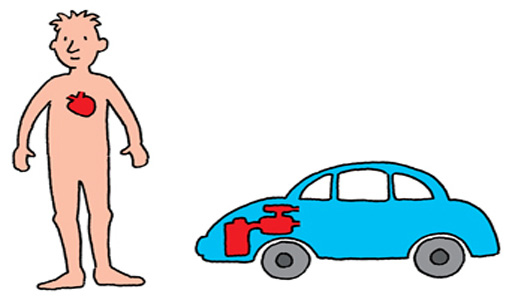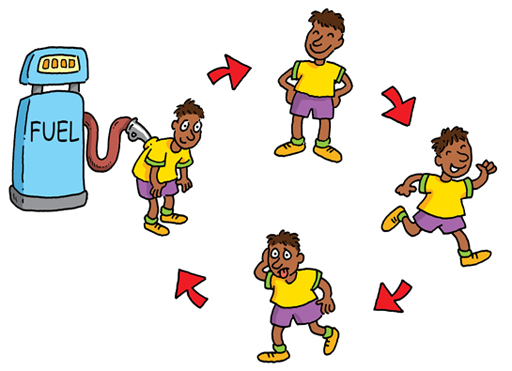2.2 The body as a machine
This is a useful way of thinking if we want to understand some basic aspects of how the body works in its relation to sport. We can think of the body as a device that operates on simple mechanical principles, that needs to be fuelled and that uses up this fuel as it is driven harder.

The car in the figure above has an engine at its centre and the body has a heart. In both cases there are many moving parts. For the car, the movement is performed by hydraulics, gears and levers; while for the human, the movement is created through muscles connected to bones. In both cases the ‘machine’, both mechanical and human, needs to be fuelled in order to operate properly and uses fuel as it operates. A car uses more fuel as it works harder, such as when it is driven at higher speeds. Likewise, the human body requires more fuel (food and drink) as it performs greater physical activity. Clearly we cannot go too far with this comparison but it's a very useful model if we restrict ourselves to some simple similarities.

Each athlete has his or her own ‘biological machine’ and the way that they use science to improve their performance depends greatly on the sport in which they are involved. Those who sprint in any sport, for example, train their bodies in certain ways that differ from those who participate in endurance events. The engine analogy can help us understand how different elements interact within complex systems.
